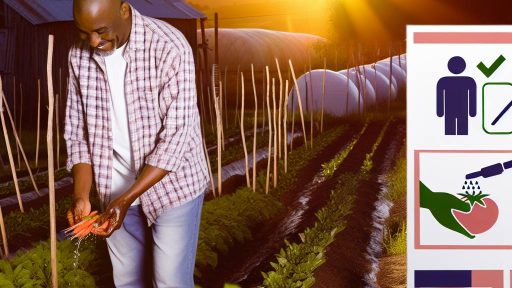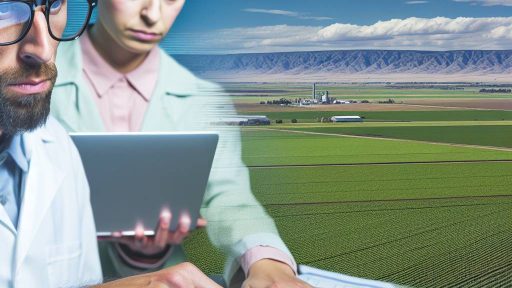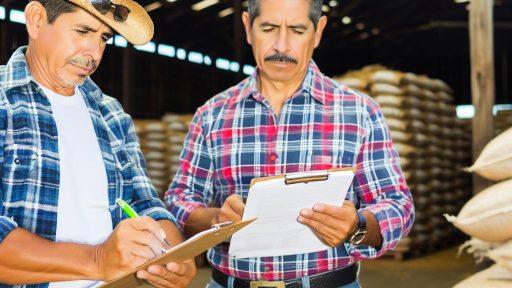Introduction to Climate Laws
Overview of Climate Laws
Climate laws are regulations aimed at mitigating climate change.
These laws dictate how industries and individuals can manage their carbon emissions.
In recent years, many countries enacted new climate laws to address these challenges.
For example, the European Union’s Green Deal aims for a carbon-neutral economy by 2050.
Moreover, the U.S. has set ambitious targets through the Inflation Reduction Act.
Importance of Climate Laws
Implementing effective climate laws is crucial for sustainable development.
They help protect vulnerable ecosystems and communities from climate impacts.
Furthermore, these laws promote investments in renewable energy sources.
As a result, they drive innovation within the agricultural sector.
Overall, climate laws aim to create a balanced approach to environmental and economic needs.
Impact on Global Farming Practices
Climate laws significantly influence farming operations worldwide.
They encourage farmers to adopt sustainable practices and reduce emissions.
Transitioning to eco-friendlier technologies can improve efficiency and productivity.
Consequently, adherence to these laws can enhance a farmer’s market competitiveness.
Additionally, climate policies often involve financial incentives for sustainable farming.
Transform Your Agribusiness
Unlock your farm's potential with expert advice tailored to your needs. Get actionable steps that drive real results.
Get StartedTypes of Climate Laws Affecting Agriculture
Regulatory Frameworks
Regulatory frameworks govern agricultural practices in response to climate change.
These regulations often address greenhouse gas emissions from farming operations.
Furthermore, they promote sustainable land use practices and soil conservation.
For instance, the Clean Air Act sets standards for air quality that affect agricultural emissions.
Similarly, the Environmental Protection Agency enforces regulations for agricultural runoff.
Subsidy Programs
Subsidy programs incentivize farmers to adopt eco-friendly practices.
Many governments offer financial assistance for implementing renewable energy technologies.
Additionally, subsidies are available for farmers transitioning to organic farming.
These programs aim to reduce the environmental impact of traditional farming methods.
Climate Adaptation Policies
Climate adaptation policies focus on enhancing agricultural resilience.
These policies provide guidelines for farmers facing climate variability.
For example, crop insurance programs help mitigate losses due to extreme weather.
Moreover, they encourage the development of climate-resilient crop varieties.
Farmers gain access to training on sustainable farming techniques through these initiatives.
Carbon Pricing Mechanisms
Carbon pricing mechanisms influence farming operations by assigning a cost to emissions.
Farmers may adjust their practices to reduce carbon footprints.
This adjustment can lead to investments in carbon offset programs.
Consequently, some programs offer financial rewards for adopting sustainable practices.
International Agreements
International agreements shape national policies affecting agriculture.
For instance, the Paris Agreement compels countries to reduce greenhouse gas emissions.
These commitments impact agricultural sectors worldwide.
As a result, farmers may face stricter regulations on emissions and water usage.
Impact of Climate Change on Farming Practices: A Historical Perspective
Understanding Historical Context
Farmers have always adapted to changing climates throughout history.
Historically, they modified their practices based on weather patterns.
Showcase Your Farming Business
Publish your professional farming services profile on our blog for a one-time fee of $200 and reach a dedicated audience of farmers and agribusiness owners.
Publish Your ProfileAncient civilizations relied heavily on seasonal changes for planting and harvesting.
For instance, the Nile’s flooding dictated planting schedules in ancient Egypt.
Influence of Technological Advances
The Industrial Revolution brought significant changes to farming practices.
Farmers gained access to machinery that improved efficiency.
Rain gauges and thermometers became common tools for agricultural planning.
As a result, farmers developed better methods to predict crop yields.
Impact of Policy Changes
Government policies have historically affected farming operations.
Subsidies and tariffs shaped the global agricultural landscape.
Notably, the New Deal had profound impacts during the 1930s.
This policy aimed to stabilize agricultural prices during the Great Depression.
Recent Developments and Trends
In recent decades, climate change has intensified its effects on farming.
Extreme weather events have become more frequent and severe.
For example, droughts and floods directly impact crop yields.
Farmers now monitor weather patterns closely to mitigate risks.
Looking to the Future
Modern farming practices continue to evolve in response to climate change.
Technology, such as precision agriculture, plays a crucial role.
Farmers use data analytics to make informed decisions.
Additionally, sustainable practices aim to reduce environmental impact.
Consequently, farmers are increasingly focusing on resilience.
Gain More Insights: Legal Implications Of Pesticide Misuse In Farming
Economic Implications of Climate Regulations for Farmers
Understanding the Costs
Climate regulations impose several costs on farming operations.
Farmers must invest in new technologies to comply with these laws.
For instance, purchasing renewable energy sources can be expensive.
Additionally, upgrading equipment to reduce emissions often requires significant funds.
Moreover, there may be costs associated with training staff on new practices.
Tighter regulations often lead to increased operational expenses.
Evaluating the Benefits
Despite these costs, climate regulations offer notable benefits.
Many farmers experience enhanced efficiency through improved practices.
Additionally, sustainable farming can lead to higher yields in the long run.
Access to subsidies and grants also supports farmers transitioning to greener methods.
Furthermore, consumers increasingly prefer sustainably sourced products.
This shift can improve market prices for compliant farmers.
Balancing Costs and Benefits
Farmers must carefully assess the balance between costs and benefits.
Implementing eco-friendly practices may pay off over time.
However, short-term costs can create financial strain for many operations.
Additionally, varying impacts exist across different types of farming.
Crop farmers and livestock producers may experience unique challenges.
Engaging with government programs can alleviate some of this financial burden.
Real-World Examples
Several farmers have successfully adapted to climate regulations.
For example, Sarah Greene operates a dairy farm with renewable energy sources.
Showcase Your Farming Business
Publish your professional farming services profile on our blog for a one-time fee of $200 and reach a dedicated audience of farmers and agribusiness owners.
Publish Your ProfileHer investment in solar panels significantly reduced energy costs.
Similarly, Tom Baker, a corn farmer, adopted precision agriculture techniques.
His method enhanced yield while minimizing resource use.
These examples illustrate the potential for adaptation and success.
Discover More: Funding Opportunities Through Conservation Programs
Technological Innovations in Farming Due to Climate Laws
Introduction to Technological Advances
Climate laws drive significant changes in farming technology.
Farmers increasingly adapt to meet stricter environmental regulations.
This adaptation leads to innovative farming solutions.
Precision Agriculture
Precision agriculture becomes a key focus for many farms.
This technology uses data to optimize farming practices.
Sensors and drones monitor crop health and soil conditions.
By utilizing this information, farmers can make informed decisions.
As a result, resource use becomes more efficient.
Water Conservation Technologies
Water scarcity is a growing concern for farmers.
Climate laws encourage the adoption of water-saving technologies.
Drip irrigation systems minimize water waste significantly.
Smart irrigation systems respond to real-time weather data.
This innovation helps maintain crop yields even during droughts.
Renewable Energy Adoption
Renewable energy becomes essential for sustainable farming.
Solar panels and wind turbines power many agricultural operations.
This reduces reliance on fossil fuels significantly.
Farmers can lower their energy costs through these technologies.
Additionally, excess energy can be sold back to the grid.
Carbon Capture Techniques
Carbon capture technologies gain traction in the agricultural sector.
Farmers are increasingly using cover crops to improve soil health.
This practice captures carbon and enhances soil fertility.
Field management practices are evolving to include tree planting.
These initiatives align with climate laws and promote sustainability.
Data-Driven Decision Making
Data analytics plays a crucial role in modern farming.
Climate laws push for more transparency and reporting of agricultural practices.
Farmers now utilize software to track crop performance and market trends.
This data helps predict outcomes and plan future operations effectively.
Moreover, it enhances their ability to apply for sustainability grants.
Collaboration and Knowledge Sharing
Farmers increasingly collaborate on sustainability initiatives.
Local farming communities share innovative practices and technologies.
Online platforms facilitate knowledge exchange among farmers globally.
Institutions support research and development in sustainable farming.
This collective effort accelerates the adaptation of best practices.
Delve into the Subject: The Role Of Government Agencies In Pesticide Regulation

Case Studies: Successful Adaptation Strategies from Farmers under Climate Regulations
Innovative Approaches to Water Management
Farmers are adopting advanced irrigation techniques.
Showcase Your Farming Business
Publish your professional farming services profile on our blog for a one-time fee of $200 and reach a dedicated audience of farmers and agribusiness owners.
Publish Your ProfileThese methods increase efficiency and reduce water waste.
For instance, Sarah Jennings implements drip irrigation on her tomato farm.
This system delivers water directly to the plant roots.
Consequently, it minimizes evaporation and runoff.
Additionally, she collects rainwater in storage tanks.
This practice provides a supplementary water source during dry spells.
Crop Diversification Strategies
Diversifying crops helps mitigate risks associated with climate change.
James Turner has shifted from monoculture to a variety of crops.
He now grows corn, beans, and peppers side by side.
This approach enhances soil health and reduces pest outbreaks.
Moreover, it creates multiple income streams throughout the year.
Soil Health Practices
Improving soil health is crucial for sustainable farming.
Emily Chen practices cover cropping on her fields.
Cover crops protect the soil from erosion and improve organic matter.
She also employs crop rotation to manage soil nutrients effectively.
These strategies lead to higher yields and reduced fertilizer dependency.
Utilizing Technology for Precision Agriculture
Farmers increasingly rely on technology for better decision-making.
Mark Thompson uses drone technology to monitor his fields.
Drones provide real-time data on crop health and needs.
This information enables targeted interventions and resource allocation.
Ultimately, it leads to more productive farming operations.
Building Community Resilience
Collaboration among farmers fosters resilience against climate impacts.
The Green Valley Farmers Association shares resources and knowledge.
They host workshops on sustainable practices and climate adaptation.
This sense of community strengthens their collective response to challenges.
Furthermore, they advocate for supportive policies at the local level.
Uncover the Details: The Role of Farm-To-Table Policies in Supporting Rural Agriculture
Barriers to Compliance: Challenges Farmers Face with Climate Legislation
Regulatory Complexity
Farmers encounter a complex web of regulations.
This complexity increases the challenge of compliance.
For instance, understanding local, state, and federal laws can be overwhelming.
Additionally, regulations often change without notice.
As a result, farmers struggle to stay informed about their obligations.
Financial Pressures
Compliance with climate laws often demands substantial financial investment.
Farmers may need to upgrade equipment or adopt new practices.
These costs can be prohibitive, especially for smaller operations.
Moreover, low-profit margins in agriculture exacerbate financial constraints.
Consequently, some farmers may delay compliance due to monetary concerns.
Lack of Resources and Support
Many farmers lack access to necessary resources for compliance.
Educational programs that explain climate laws are often insufficient.
Furthermore, support from agricultural extension services may be limited.
Showcase Your Farming Business
Publish your professional farming services profile on our blog for a one-time fee of $200 and reach a dedicated audience of farmers and agribusiness owners.
Publish Your ProfileConsequently, farmers may feel isolated in navigating compliance challenges.
They may not know where to turn for help or information.
Technical Challenges
Implementing climate-friendly practices often requires technical know-how.
Many farmers lack training in newer, sustainable farming technologies.
Furthermore, adapting existing methods to comply with legislation can be challenging.
This lack of technical expertise can impede effective compliance efforts.
Ultimately, farmers need access to training and resources.
Market Uncertainties
Market fluctuations can complicate compliance with climate laws.
Farmers may hesitate to invest in sustainable practices.
This hesitation arises from fear that market conditions could change.
For instance, climate-smart investments might yield lower returns.
Thus, uncertainty deters farmers from committing to compliance.
Future Trends in Climate Legislation and Their Potential Effects on Agriculture
Emerging Climate Policies
Governments worldwide are increasingly focusing on climate policies.
These policies aim to reduce greenhouse gas emissions.
Additionally, they seek to promote sustainable practices in farming.
For instance, the European Union has proposed stricter emissions targets.
In response, many countries are adopting similar frameworks.
Effects on Crop Production
New climate laws will significantly impact crop production.
Farmers may need to adapt their practices to comply with regulations.
This adaptation may include changing crop varieties for resilience.
Moreover, water usage regulations could affect irrigation practices.
Consequently, crop yields may fluctuate depending on compliance.
Economic Implications for Farmers
Implementing climate laws can lead to economic shifts in farming.
Some farmers might face increased operational costs.
However, incentives for sustainable farming could offset these costs.
Grants and subsidies may help farmers transition to greener practices.
Over time, these changes could promote a more sustainable agriculture economy.
Technological Advancements
Advancements in technology will play a crucial role in compliance.
For instance, precision agriculture can optimize resource use.
This technology helps to meet regulations while enhancing productivity.
Moreover, innovations in carbon capture could benefit farmers sustainably.
Adopting modern technologies will likely become essential for future farming.
Consumer Expectations and Market Trends
As climate laws evolve, consumer preferences shift as well.
Consumers increasingly demand sustainably produced food.
This trend could influence market pricing and demand for crops.
Farmers must remain attentive to these changing consumer expectations.
Failing to adapt can result in reduced market access.
Additional Resources
Laws and Regulations that Apply to Your Agricultural Operation by …




